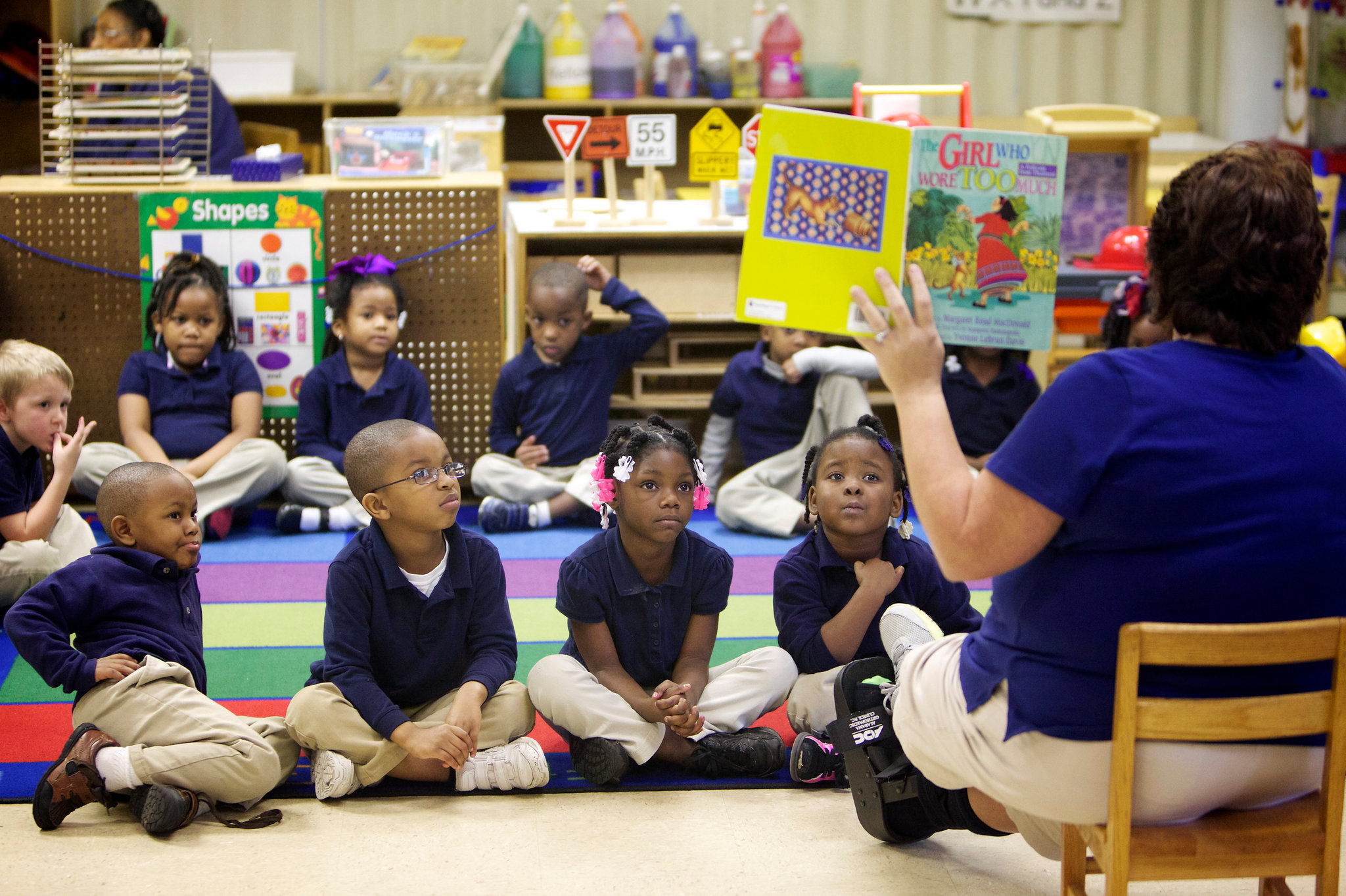We now know that reading and writing must be directly taught because of their immense complexity (Part 3). We also know that writing is labeled a “neglected skill” in U.S. classrooms (Part 1). And we learned that focusing solely on reading fluency will not result in writing proficiency; only teaching and practicing writing will do that (Part 2). What many may not be aware of is that there are some very good reasons not just for teaching writing, but for teaching writing simultaneously with reading.

image via New York Times
Understanding the areas of the brain responsible for Writing, Reading, Speaking & Listening and how reading and writing evolved from speaking has implications for literacy instruction.
We already know that there’s no “reading center” in the brain; instead, reading involves the coordination and connection of several separate brain areas. However, there is some fascinating overlap between reading and listening that I think can and should be leveraged to improve reading. It turns out that listening to a story and reading a story light up the same areas of the brain. In a very real sense, reading is learning to listen to yourself tell you a story. I don’t think it’s merely coincidental that kids whose parents read to them frequently generally become better readers; they have countless hours of listening to someone tell them stories from the pages of books so the leap to telling the stories to themselves is far shorter. This is as good an argument as any for reading to students and providing audio books, even for older students. Even for high schoolers. This idea of reading as learning to listen to yourself tell you a story might also be a good analogy for kids to help them understand the end goal.
However, other areas that appear connected, aren’t: Studies of stroke victims indicate that writing and speaking systems are considerably independent, enough so that speech is not a reliable indicator of writing ability. Writing and speaking are different areas of the brain that are connected by intentional practice but are positionally separate. Their essential independence is demonstrated by the fact that people who may not be able to speak in a grammatically correct way after a stroke can still write flawless English. Part of stroke rehabilitation is working to rebuild connections between these areas and that further underscores the need for writing to be directly taught and thoroughly developed: it’s the deliberate cultivation of connections between multiple, separate areas of the brain.
Let’s look at the evolution of writing and reading. Scientists estimate that spoken language has been around for 60,000 years. Writing, on the other hand, has been around for about 5,000 years, so it’s a comparative newbie. Writing was independently invented in multiple separate locations at several different points in history as a means to capture spoken language and communicate over time and distance. Reading that written representation followed hard after as others learned to decode the symbols for sounds/ideas/objects/grammar in the written language. It’s accurate to say that the entire purpose of writing was to be read – that reading had to develop for writing to have any point. They’re like fraternal twins born minutes apart; different, but inextricably linked. Both writing and reading build on existing schemata for speaking and visual recognition, and then, to some extent, they build on each other, which leads us to the next point:

image via teachingenglish.org.uk
Teaching Reading and Writing Simultaneously has benefits for both. In the U.S., reading and writing are often taught as separate subjects with their own topics and sometimes with their own instructors. Research indicates, however, that it is best to combine reading (decoding) and writing (encoding) instruction at the same time with the same teachers and topics. Simultaneous instruction aids the students’ ability to sound out words – teaching writing at the same time as reading improves reading. Teaching decoding and encoding simultaneously leads to a sort of “overlearning,” which helps with both reading and writing (Graham, S., & Hebert, M. 2010. Writing to read: Evidence of how writing can improve reading. Washington, D.C.: Alliance for Excellent Education). This is the Ouroboros of learning, an endless feedback loop where getting better at reading improves writing and getting better at writing improves reading when they are taught together.
Both reading and writing require additional skills to enhance their effectiveness. Vocabulary development and background knowledge are critical skills that can deeply inform the quality of a student’s written product and improve their comprehension of text. Vocabulary is a major predictor of academic success, and background knowledge from the various content areas builds a lot of important vocabulary. This is why focusing solely on Math and ELA and relegating Science and Social Studies to ancillary subjects actually undermines reading and writing; children don’t acquire as much content-specific vocabulary. Understanding syntax, semantics, and morphology plays an important role for both reading and writing. Thus it makes sense that integrating reading and writing instruction around the same topic or story will enhance, strengthen, and support the interconnections between the two tasks and help integrate and solidify new vocabulary. This, of course, leads to better comprehension and more retention of content. Again, Ouroboros.
Reading can increase empathy/understanding because of how the brain registers experiences. To the brain, reading about experiences lights up the same areas as living those same experiences. This is why you can read a book and feel like you’ve visited another world; in a neurological sense, you have. Along those same lines, writing about reading offers a way for students to make meaning of what they’ve read and helps consolidate understanding and increase retention of the content. Win-win.
 Different types of/purposes for reading result in different activity in the brain; close, analytical reading differs from pleasure reading in how the brain processes the information, causing different parts of the brain to fire. This implies that both types of reading are important for all areas involved in reading to develop fully. So the Common Core emphasis on non-fiction and analytical literary reading is a good one, so long as we continue to include reading for pleasure. This further implies that writing about reading in different ways and for different purposes will assist in strengthening all the connections in use and require higher-order thinking to apply various lenses of analysis (like compare/contrast, cause/effect, feminism, etc.) to the reading for the purpose of writing about it.
Different types of/purposes for reading result in different activity in the brain; close, analytical reading differs from pleasure reading in how the brain processes the information, causing different parts of the brain to fire. This implies that both types of reading are important for all areas involved in reading to develop fully. So the Common Core emphasis on non-fiction and analytical literary reading is a good one, so long as we continue to include reading for pleasure. This further implies that writing about reading in different ways and for different purposes will assist in strengthening all the connections in use and require higher-order thinking to apply various lenses of analysis (like compare/contrast, cause/effect, feminism, etc.) to the reading for the purpose of writing about it.
The neurological connections between reading, writing and speaking & listening are complex and complementary. Because of this, the impulse to simplify and silo these as discrete subjects must be resisted because all the research indicates that they both require and reward direct and simultaneous instruction. Tapping into the brilliant feedback loop that exists between reading, writing, speaking & listening should be the goal of every ELA program at every grade level. Direct instruction based in shared topics, coupled with concerted practice in all three of the primary ELA areas, will pay both short- and long-term dividends for students across skill and content areas in improved reading, improved writing, improved retention, and increased use of higher-order thinking skills.
Can’t ask for much better than that.
